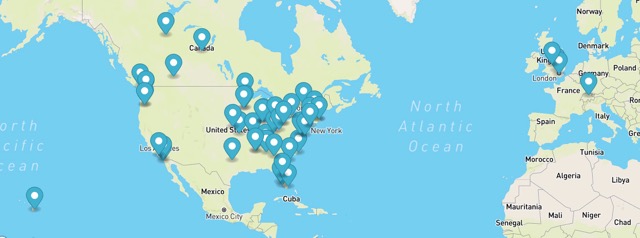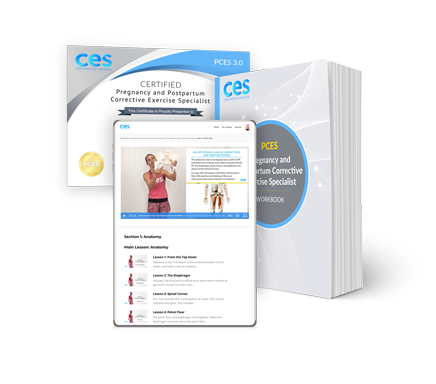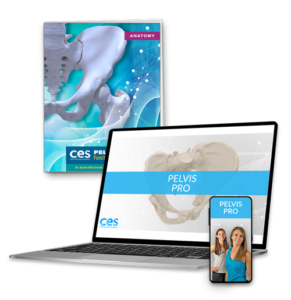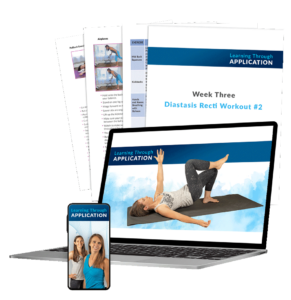Pelvis Pro
In this digital course, you’ll become a true pelvis pro - visualizing biomechanics and understanding what lies below the surface.
-
Earn Continuing Education Credits (CECs).
-
Registration opens in the fall. Join the Presale list for a $150 discount off the course price.
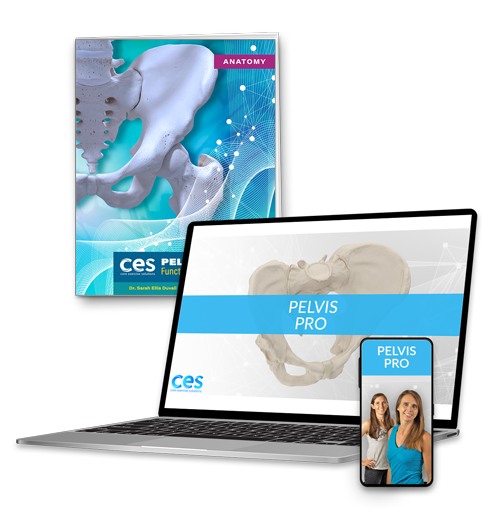

And many more certifying bodies available. See FAQ for a full list.
-
WHO IT'S FOR
This course is designed to grow the knowledge and careers of personal trainers, pilates instructors, yoga teachers, physical therapists, occupational therapists, chiropractors, and other fitness and rehab providers.
-
FORMAT
This course is offered 100% online. Access course materials on any device, any time. Content is broken down into anatomy and kinetic chain lectures, key assessments, exercises, specific issues, exercise assessments and case studies.
-
COURSE LENGTH
This course is entirely self-paced, and the material can be covered in detail in about 25 total hours.
-
100% GUARANTEE
Try the course for 30 days. If you don’t love it, let us know and you'll get all your money back.
The World Needs More PELVIS PROFESSIONALS
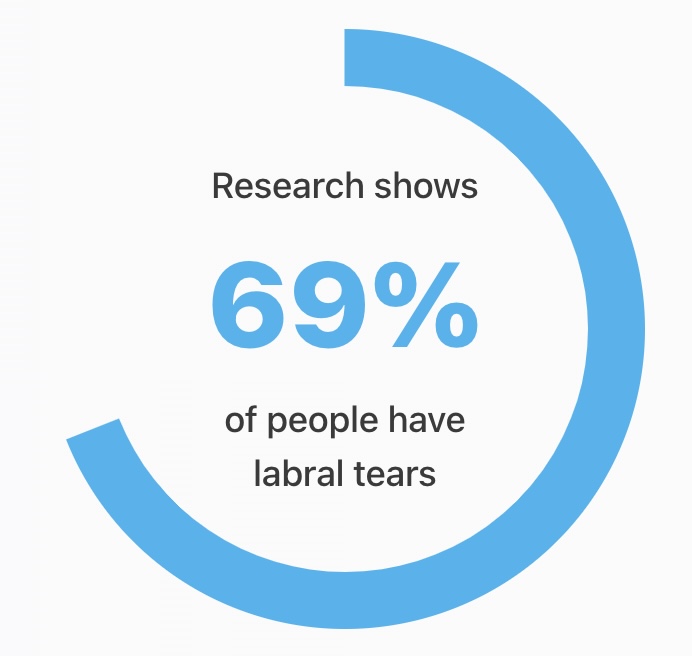
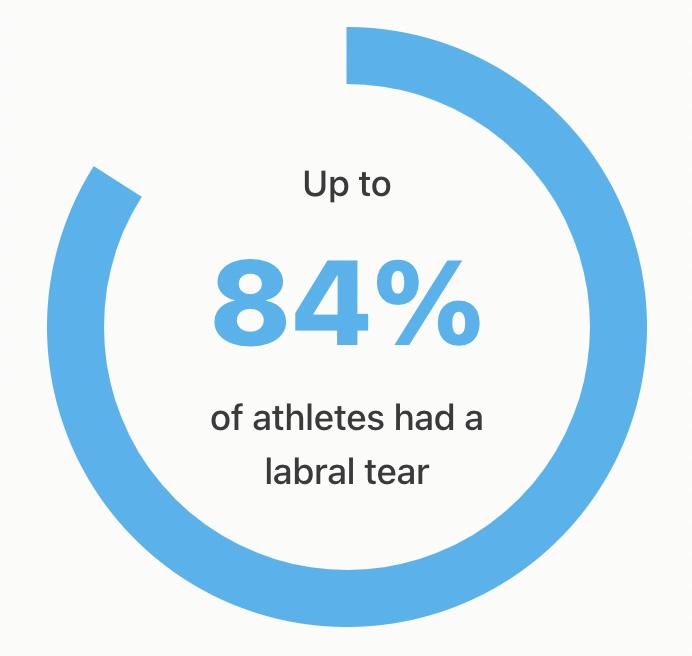
Odds are, many of the people you work with now already have a degenerative labral tear. How do you know if you’re making it better or worse?
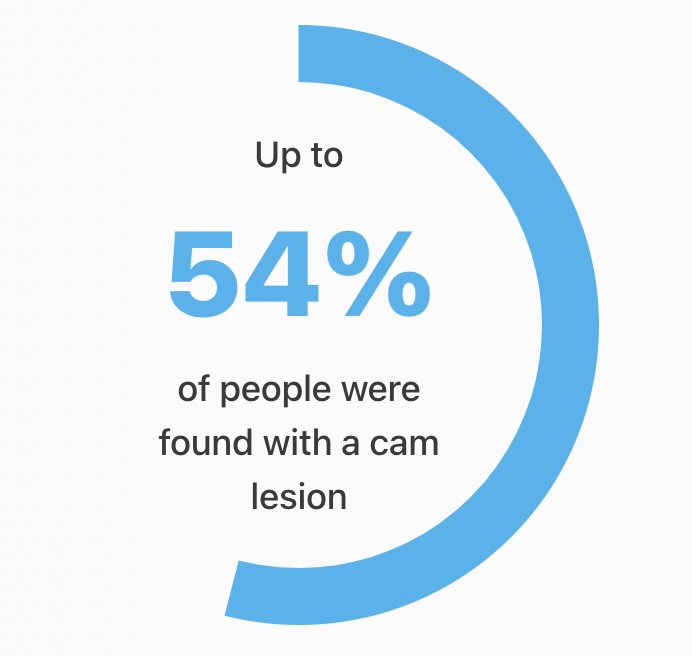
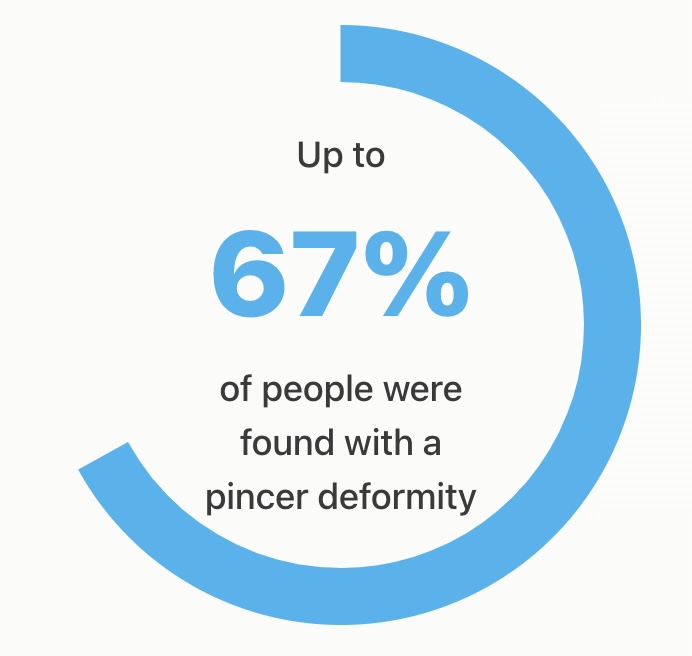
How should you optimize movement to prevent these deformities from becoming sources of pain? (Register et al., 2012; Heerey et al., 2019; Frank et. al., 2015)
It can be hard to find an expert to help resolve hip and pelvis issues.
Many places still rely on the same basic exercises taught 20 years ago. They are non-specific and often don’t produce great results.
Have you ever met anyone whose hip still bugs them? Or do they have that old injury that just won’t heal?
Maybe they can’t go for a long car trip or run because their deep butt pain will flare up. Or they do all the glute exercises but never seem to be able to build glute strength. Has “glute work” made things feel worse? Do they have SI Joint pain that they can’t get a lasting fix for?
These are the exact issues that the Pelvis Pro course is designed to improve through specific assessments and detailed exercise programming.
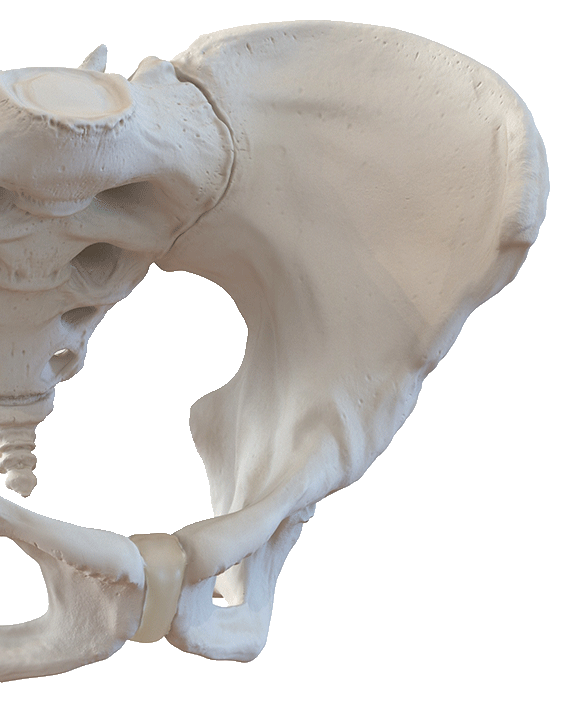
What you'll learn in Pelvis Pro
-
How degenerative labral tears are caused and what you can do to prevent them from happening or keep them from getting worse.
-
Why FAI and hip impingement is so dependent on pelvic orientation and how you can quickly extend hip flexion range of motion while decreasing pain. Squat lower without front hip pinching.
-
How to unstick the sacrum and coccyx to relieve tailbone pain and tightness. Restore relative motion at the hip, pelvis, and sacrum through exercise for lasting results. Freeing the sacrum feels amazing!
-
Why the piriformis and other deep hip rotators (like the obturators) hold tension, pinch nerves, and cause deep butt pain. Take away exercises to help re-orient the pelvis to put the glutes at a more advantageous angle to work and get rid of that deep glute pain forever.
-
Why SI joint pain and SPD pain are often the product of muscle imbalances. Learn assessment techniques to know which exercises to focus on for lasting results. No more guessing with a shotgun approach.
-
To understand the diagnosis of deep gluteal syndrome and why we’ve moved away from calling all hip pain piriformis syndrome.
-
Why hip bursitis is actually quite rare and more people with outer hip pain actually show a strained glute medius or minimus instead. Learn exercises to help heal the strain and eliminate the movement patterns that led to the issue.
-
What causes hamstring tightness and how to loosen up tight hamstrings quickly and without stretching.
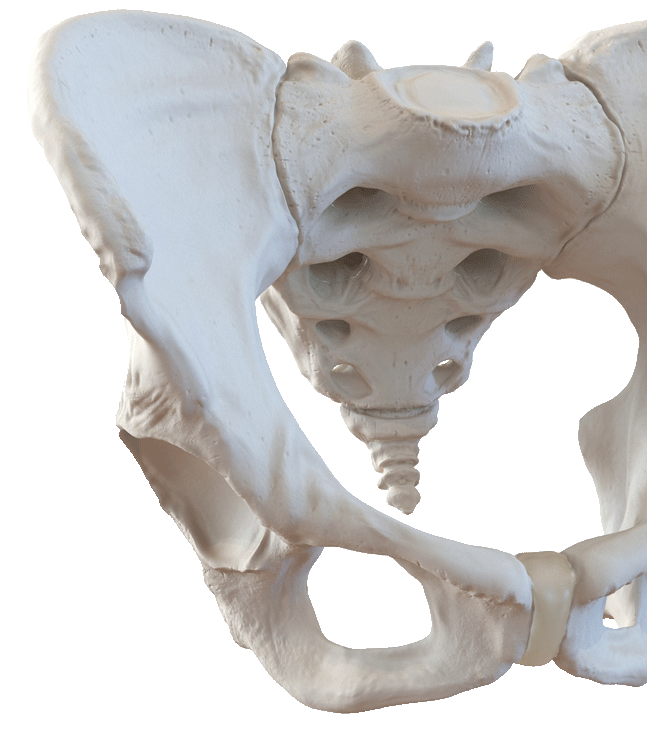
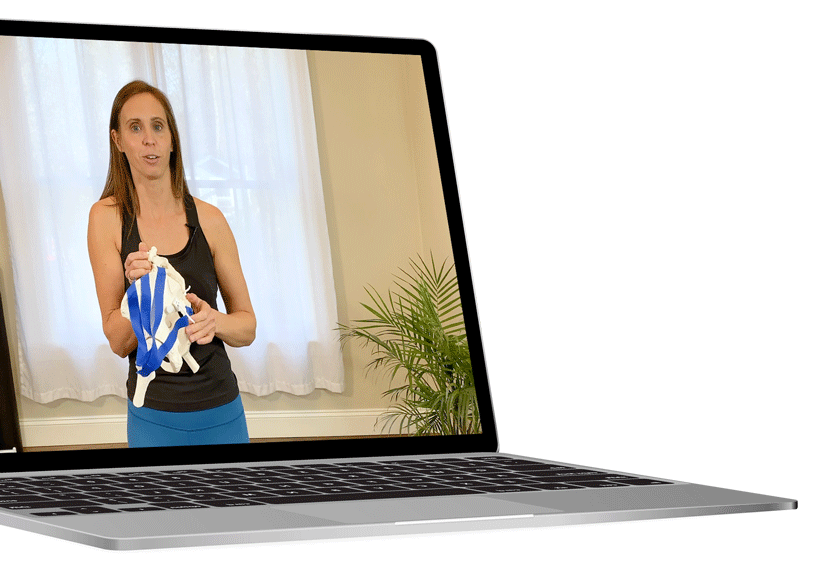
How the course works
This course starts with an evidenced-based anatomy review, learning the why behind the movement drivers. Knowing the why helps you solve the problem quickly and efficiently.
The anatomy moves into a biomechanical kinetic chain section, which dives deeper into the hip and pelvis mechanics, including common imbalances that lead to injury.
Next, we move into an assessment section where we go through key assessments and how to use their findings to design the most effective exercise programming. Gone are the days of treating every hip issue with bridges, clams, and dead bugs.
This course has both a detailed assessment section and an exercise assessment section. We can tell so much by watching how people move through exercises, and that movement evaluation should be included in a good assessment.
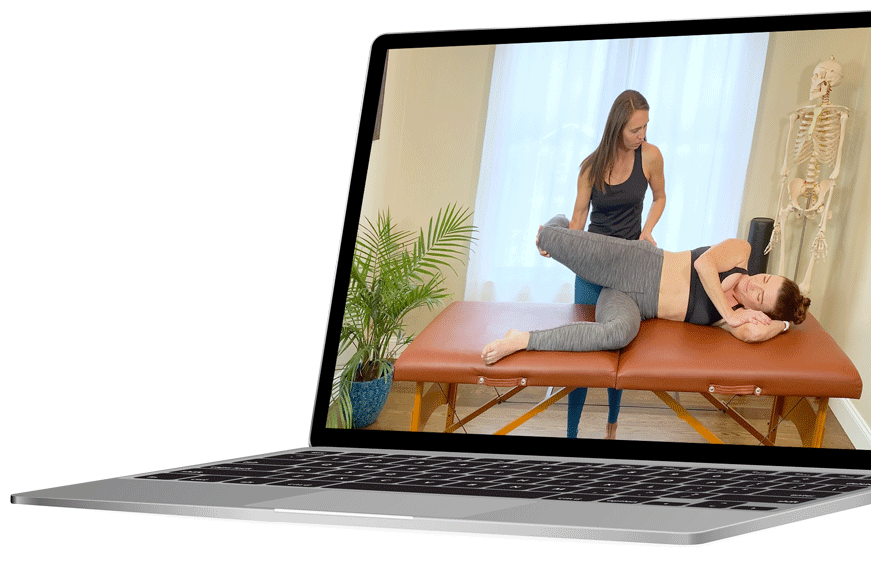
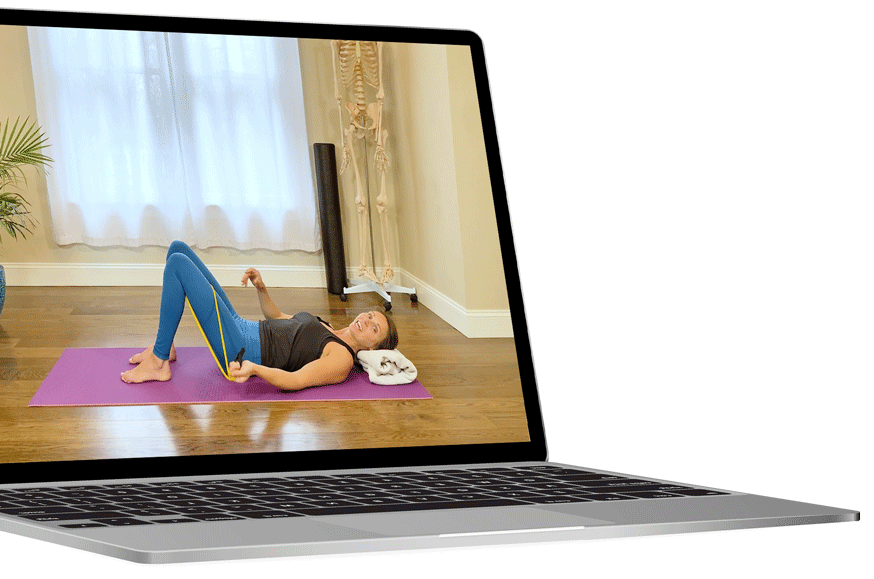
Once armed with your assessment tools, we move into specific considerations. This is where we get into the research and exercise specifics for the most common issues in the hip and pelvis. This includes labral tears, FAI, hip impingement, pelvic orientation, coccyx or tailbone pain, piriformis pain, deep hip rotator tightness, deep gluteal syndrome, IT band syndrome, SI joint pain, hip bursitis, glute medius and minimus tendonitis, greater trochanteric pain syndrome, hamstring tightness and strains, adductor tightness and strains.
For each specific issue, we’ll go through a progressive exercise program that starts with easy regressions for the lowest level and moves to the highest athletic level. Each exercise in the program comes with a PDF handout ready to be emailed or printed for a client to help make programming a breeze.
Over 400 studies were read in preparation for this course and over 165 were included. Many of these studies are included in the lecture as PDF downloads. Reading the studies is not required for the course, but they are included to help deepen your understanding.
This course is a thoughtful blend of research, practical application, and exercise programming. You will walk away being able to picture pelvic biomechanics in your mind and understand what lies below the surface. Understanding the anatomy on this level makes solving specific issues easy. We know it’s not always an easy, straightforward road, so we’ve also included a thorough troubleshooting section for when things just aren’t going as you planned.
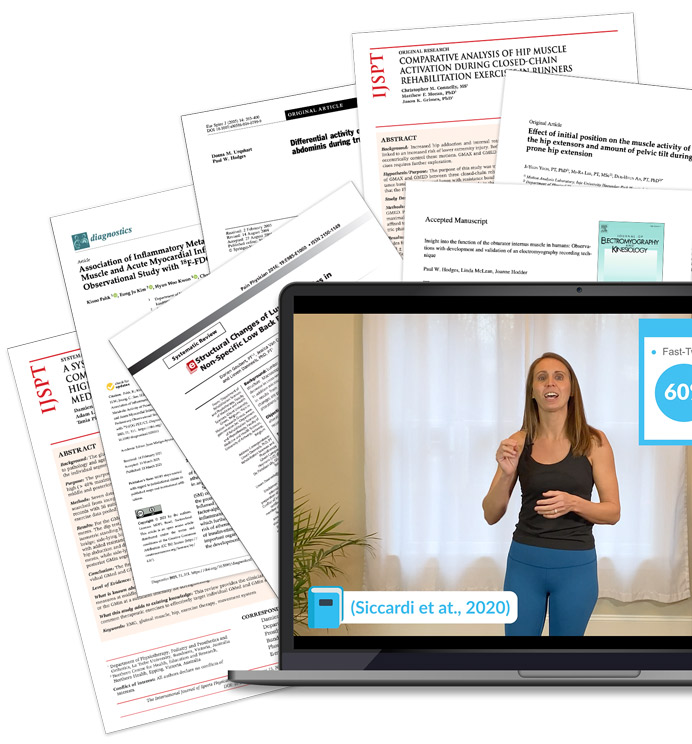
Why learn with CES?

Dr. Sarah Ellis Duvall, PT, DPT, CPT, CNC
With over 35 years of combined clinical experience as both physical therapists and personal trainers, Sarah and Anna bring a wealth of knowledge to help guide you through the course.
This course offers a unique way of teaching that will help you understand the bony and muscular anatomy and the pelvis and hips like never before. Instead of leaving confused or feeling like a course only skimmed the surface, you get the perfect mix of going deep into a topic with world-class teaching so you’ll really understand the topic at hand. You’ll also learn cutting-edge approaches that are not often taught in evidenced-based courses with multiple live case studies so you can see assessment through to recommendations. It’s the perfect blend of being all-encompassing and progressive with a foundation of evidence.

Dr. Anna Hammond, DPT, OCS, CSCS, PCES
"The Pelvis Pro course is brilliant, and Sarah does the most amazing job of making a very complicated subject simple, fun, and easily applicable to real life. I cannot wait to have my clients start seeing even better results because of the new knowledge I have. This course is a MUST for any fitness professional who wants to take their training to the next level while helping their clients make unbelievable progress."
Jen Landry, Personal Trainer
"As someone who suffers from hip pain, impingement, popping, and sits in an anterior pelvic tilt, I was eager to learn how to address my own personal problems and bring this knowledge to my clients. If you are a personal trainer who works with anyone that complains of hip impingement, hip popping or pain, this program is ideal for you."
Angela Mosley, Personal Trainer
"Because the quality of the PCES course was so high, I had high expectations for this new Pelvis Pro course and it did NOT disappoint! The Pelvis Pro course covers anatomy, bio-mechanic relationships, assessments, and includes an extensive library of exercises to help your clients feel good and move well again. Having this level of information makes me confident that I can deliver the results my clients want."
Caitlin Klossner, Personal Trainer and Owner of Fitness for Motherhood
Pricing
Become a true Pelvis Pro. We dive deep into research and practical application on all major hip issues like impingement, anterior tilt, piriformis pain, glute medius strains, deep hip pain, outer hip pain, and hip flexor tightness. We explore a wide range of case studies, live assessments, exercise plans and troubleshooting.
Pelvis Pro registration opens in the fall! Join the presale list for $150 off the course price.
Pelvis Pro
-
Explore complete workout progressions, case studies, easy-to-follow assessments, exercise plans, and troubleshooting.
-
Get checklists, handouts, and forms ready to print or email.
-
Join Sarah for an exclusive live Q and A
-
Complete workbooks outlining all the information in the course, including helpful charts
-
25 hours of CEU credit
$750
USD One-Time Payment
or
6 payments of $135 | 3 payments of $260 USD
30-day money-back guarantee
Frequently Asked Questions
How is the Pelvis Pro course different from the Pregnancy and Postpartum Corrective Exercise Specialist course?
The two courses are completely different, with very little overlap in curriculum or exercises. Sarah intentionally designed the Pelvis Pro course to be completely separate from the PCES course, so both are standalone and offer students a deep breadth of different knowledge. In some ways, Pelvis Pro could be a continuation that builds on the PCES course because you go deeper into the nuances and biomechanics of the pelvis that are introduced in PCES. However, the PCES course is not a prerequisite. In Pelvis Pro, Sarah takes you on a journey through the pelvis that will be easy to understand and follow along as you learn.
The Pelvis Pro course focuses primarily on bony biomechanics and injury. The PCES course focuses mainly on diastasis and pelvic floor issues, like leaking and prolapse. It also focuses on the pregnancy and postpartum time period. The Pelvis Pro course goes into issues like hip impingement, labral tears, hamstring and adductor tightness and tears, deep hip rotator tightness, piriformis pain, SI joint pain, IT band pain, and much more. The PCES course is designed to take providers to the next level for working with both pregnant and postpartum clients as well as covering issues like diastasis recti and pelvic floor dysfunction.
The Pelvis Pro course enables a provider to be a true pro at understanding the pelvis. The PCES course is much broader, touching on many other issues like posture and breathing. The Pelvis Pro course goes deep into the pelvis so you’ll walk away with a thorough understanding, plus it includes complete workout progressions to help with all the common issues associated with hip and pelvis pain.
Bottom line: Both courses are very different in their content, and both are packed full of great information, research, and practical application! If you enjoyed one, you will enjoy the other.
Current CEU Approvals
Please check back for updates on CEU approval. Send us an email if you have any questions or would like to see a particular approval. [email protected]
Approved:
- NASM- 1.9 CEUs
- AFAA- 15 CEUs
- NSCA- 2.0 CEUs *The National Strength and Conditioning Association approved 2.0 CEU(s) in category C for certified individuals who successfully complete this course.
- REPs New Zealand- 15 CPD Points
- ISSA- 20 CEUs
- BOC- 25 Category A CEUs
- BCRPA- 25 CECs
- NPCP- 25 CECs
- CPTN- 7 CECs
- CanFitPro- 4 CECs
- PACE- 25 Hours
- Most fitness organizations are approved through reciprocity. Please see below for the full list.
Approved in all 50 States for Physical Therapists and Occupational Therapists.
See below for details:
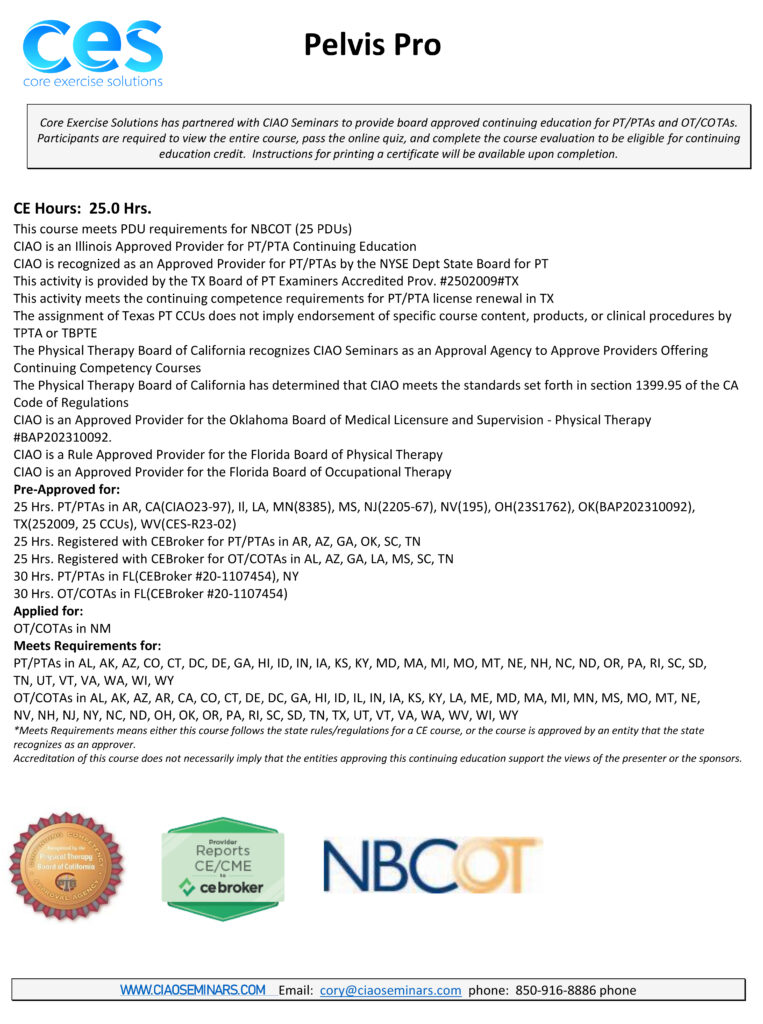
The following fitness organizations accept courses pre-approved by NASM for Pelvis Pro CE credit.
ACE, CSEP, ACSM, IFPA, NFPT, NETA, AFPTE, CCO (Ontario Chiropractors), DONA International, Yoga Alliance, and many more.
ESSA (15 points) through petition. Information needed is provided at end of course to use when submitting petition.
Contact: [email protected] if you have any questions
How many credit hours is the course?
25 hours of home study course material
How long will I have access to the course?
You’ll have lifetime, unlimited access to the course for the purposes of being able to go back and review. Personally, I hate paying a big price for a course and my access is limited to a few weeks. If you’re going to pay for a course, it should be yours to keep.
How do I gain my certificate and credit for this course?
Watch all of the lectures and pass the quiz at the end of each section with a 75% or better passing score and complete the course survey at the end.
Do I have to take the quiz by a certain date for CEU credit?
Most certifying organizations for personal training, pilates, state physical therapy, chiropractors, etc. have rules and deadlines for handing out CEU credit. It’s not our rules, but their guidelines that we must follow. You have one year from the purchase date to take all the quizzes and submit the course for CEU credit. If you finish after a year, we cannot guarantee that the course will still be covered by specific CEUs due to the nature of how renewals are done. You will not lose access to the Pelvis Pro course! But, if you want CEU credit, please finish it in a year.
AOTA Learning Outcomes
1. Students will identify 5 research articles covering specific muscular anatomy and describe how specific postures and activities of daily life contribute to muscle tension.
(Example: Swayback posture increases psoas muscle tension due to its role in containing anterior translation of the femoral head. Students learn why this posture increases hip flexor tightness, anterior capsule strain, and back pain by reviewing the research together in the course.)
2. Students will describe why posterior diaphragm expansion is important for daily life and name two exercises to help improve diaphragm excursion.
3. Students will identify why finding distal and proximal hamstrings is important for pelvic stability and daily life, and suggest a troubleshooting exercise to help find proximal hamstrings and improve pelvic orientation.
4. Students will identify errors in common exercises like clams and hip hikes that lead to over-recruitment of anterior pelvic orientation musculature versus gluteal musculature. Students will identify how this carries over into life activities such as walking up stairs and contributes to specific issues like IT band syndrome.
5. Students will identify 5 appropriate assessments for the hips and pelvis and 5 of the best corrective exercises to optimize activities of daily living when dealing with specific hip and pelvic movement patterns that can contribute to specific issues.
6. Students will identify 3 corrective exercises to help prevent and improve SI joint pain, IT band syndrome, piriformis syndrome, deep gluteal syndrome, FAI, and hip impingement.
What’s the refund policy?
We think you’ll be so blown away by the material that won’t be an issue, but if it’s not a fit, it’s not a fit. We’ll happily give you a full refund within the first 30 days. We stand behind this course as being exceptional!
Provider will not cancel the course as it is online and pre-recorded and can be delivered to the Learner even if the Provider is not available.
Other FAQ:
Education Level: No prerequisites are needed for this course for personal education. It's an introductory level course but detailed enough that even advanced learners will take something new away. You must have a level 2 or 3 qualifications to gain CIMSPA CE credit with this course.
Course Objectives and Information: Please send us an email at [email protected] and we're happy to provide you with the objectives, course outline, references, and any further information that you need.
Special Need Assistance: If assistance is needing with registering please email us at [email protected] and we would be happy to help!
Speaker has no financial disclosure

